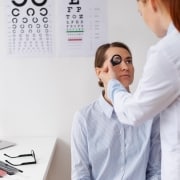What Conditions Does Medical Eye Disease Testing Cover?
When you get medical eye disease testing in Corinth, MS at Corinth Eye Clinic, your optometrist has access to a range of diagnostic results to use for detecting dangerous conditions that threaten your vision. Not only will your eye doctor be able to offer treatment plans, but the optometrist may be able to provide early detection, which is always a positive factor in terms of outcome. Here are some of the conditions that medical eye disease testing covers:
Glaucoma
Glaucoma is an insidious eye condition that often has no visible symptoms for the person. Yet, it threatens eyesight because it can lead to blindness unless detected and treated as early as possible. Millions of people around the world have some stage of glaucoma. With medical eye disease testing, early detection and treatment is possible.
Macular Degeneration
Medical eye disease testing is especially helpful for older patients who may be experiencing age-related macular degeneration (AMD). This condition negatively impacts the macula of the eye, which is the part responsible for clarity of vision. With retinal imaging and optical coherence tomography—part of medical eye disease testing—progression can be slowed and vision may be preserved.
Diabetic Retinopathy
Diabetic retinopathy is a secondary condition that often happens to patients who have diabetes. It’s especially dangerous when the underlying diabetes has not been diagnosed or treated, or is not being actively managed. With the help of medical eye disease testing, the earliest signs of diabetic retinopathy may be detected, which can help to stop its progression and save eyesight.
Retinal Detachment
Retinal detachment can happen suddenly for a variety of reasons, including ones that can’t be predicted, such as eye trauma and motor vehicle accidents. But sometimes there are early indicators that the retina is in danger of detachment due to underlying eye health problems. That’s where medical eye disease testing can be incredibly helpful, through early detection, diagnosis and treatment.
Whether or not you have any underlying conditions that threaten eye health, and no matter the age, you should strive to get medical eye disease testing at least once a year. Contact your Corinth, MS optometrist at Corinth Eye Clinic today to book your appointment.




